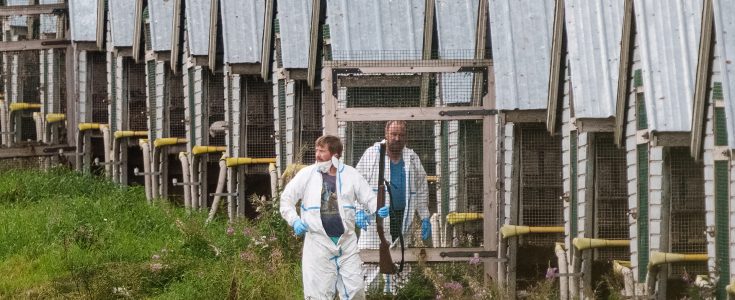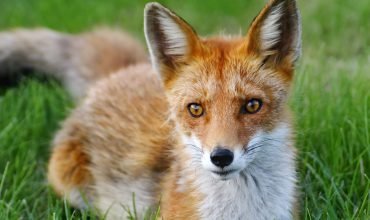A study of animals and systems in China has found viruses that could infect people are rampant in farms breeding mink, raccoon dogs and foxes for their fur.
The public health risks of fur farms have been made apparent in recent years with the worrying outbreaks of Covid-19 and avian flu on mink, fox and raccoon dog fur farms in Europe and North America. The intensive, cramped, caged systems of fur farms are potential breeding grounds for diseases and allow viruses to spread and potentially mutate quickly as they are passed from animal to animal.
Now, a new study published this month highlights the risks of further pandemics being caused by the fur industry, with particualr focus on China.
Virologist Edward Holmes, who has led research into Covid-19, told AFP he felt that the global fur farming industry ‘is one most likely ways by which a new pandemic will start’.
‘Personally, I think the fur farming inudstry globally should be closed down’, Holmes also said.
In coverage of the study, the journal Nature said:
Mink farms have also had outbreaks of the highly pathogenic H5N1 avian influenza virus. And a popular fur animal, the raccoon dog (Nyctereutes procyonoides), could have played a part in bringing the virus that causes severe acute respiratory syndrome to people in 20032. Raccoon dogs are also susceptible to, and can spread, SARS-CoV-23.
Holmes and his colleagues, including several in China, sought to identify the viruses circulating in farms in China. They swabbed lung and gut tissue samples for 461 animals that died between 2021 and 2024. Of these animals, 164 came from four species farmed exclusively for fur: mink (Neogale vison), red fox (Vulpes vulpes), Arctic fox (Vulpes lagopus) and raccoon dog. The individuals were predominantly from intensive breeding facilities in northeastern China. The rest came from farmed and wild animals used for fur as well as food and traditional medicine, spread more broadly across eastern China. These included guinea pigs, deer and rabbits. The animals had all been sick and had probably died of an infectious disease.
The researchers sequenced RNA and DNA in the tissue samples and found a trove of viruses: 125 were identified in total, including many influenza viruses and coronaviruses.




